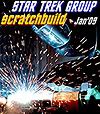- Member since
August 2005
- From: vernon hills illinois
|
Posted by sumpter250
on Sunday, June 4, 2006 12:53 PM
| how do you tie off running rigging, say, at 1:96 scale? Clove hitch? Square knot? |
|
Running rigging: There is a fixed end, and there is a hauling, or running end. Prototypically, the fixed end attaches to an eye bolt, ring bolt, or block strop. It can also be shackled to the aforementioned. In most all cases, the fixed end of the running rigging has an eyesplice worked in it, in the case of a shackle, the eyesplice is worked around a thimble. In 1/96 scale, I splice an eye, through the eyebolt, or ringbolt, or "around a thimble"(a stand alone eyesplice, I really don't try to duplicate thimbles in that scale). The alternative would probably be pass the line through the "ring" and then two half hitches around itself, secured with adhesive, closely trim the bitter end of the knot after the adhesive has set. A second alternative: pass the line through the "ring", then, using a small sewing needle, pass the line through itself a couple of times, take a tension on both parts, and apply adhesive to the "stitches", then trim the bitter end. The point is to splice an eye, or make a reasonable facimile of an eye splice. The running end: I usually set up the running end with at least two figure 8 turns around the cleat, or belaying pin, with the last turn passed under itself, and secured with adhesive. It's the turns, that hold the line, the single passunder keeps the turns from "unwinding". Remember, any hauling end in the running rigging, has to be able to be quickly loosed, and re-secured. Knots here are out of the question. I honestly cannot remember any application, in running rigging, where a clove hitch, or square knot are ever used. Eyes, in standing rigging are most usually siezed. In the case of wire, clamps are the usual method of forming the eyes. I have spliced wire.........I would rather use clamps.
Pete

 
Lead me not into temptation ..................I can find it myself
|